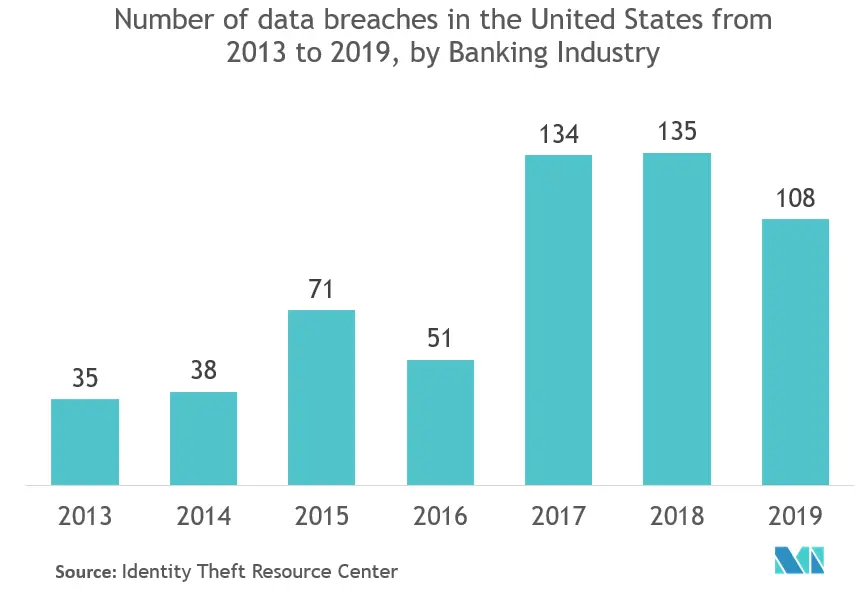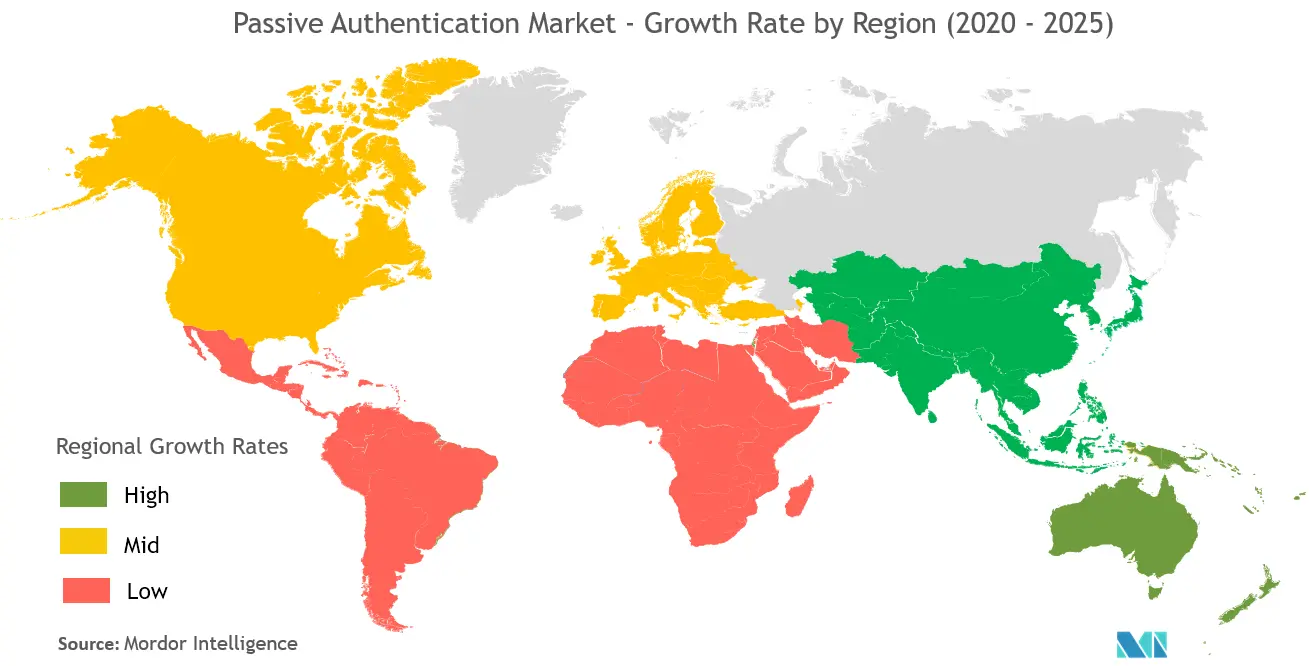Market Trends of Passive Authentication Industry
This section covers the major market trends shaping the Passive Authentication Market according to our research experts:
BFSI is Expected Hold Significant Share
- Passive authentication methods are capable of identifying a person without their active participation. The banking sector could utilize this feature when a customer calls a bank instead of asking for account numbers or passwords, the agent merely interacts. In the background, the system listens to the customer and compares the voice to the voiceprint on file. Also, a mobile banking application can quietly track user behavior like typing cadence, swiping patterns, and even geographic location to provide continuous authentication if the user’s session has been hijacked. For financial services companies that require a more discrete enrollment process, passive voice biometric technologies are also readily available to enroll customers using archives of previous calls automatically. Then, customers are quietly authenticated during the initial seconds of every call, without being prompted for a passphrase.
- Increasing the data breaches in the banks is also increasing the need for robust authentication technologies with passive authentication being one of them. Most modern smartphones are also equipped with a wealth of sophisticated technology like accelerometers, gyroscopes, touch screens, and GPS. In behavioral authentication, a user is authenticated by the unique way they interact with the phone, such as how they type or swipe, or the angle at which they hold the device. It’s not just limited to smartphones and tablets, either. Top behavioral solutions can extract and analyze over 500 unique parameters from mouse and trackpad patterns to typing cadence and browser events. They track how users interact with Web and mobile applications identifying fraudulent behavior and providing a risk score for banking and financial companies for each transaction.
- The instance mentioned above shows that even if a criminal can log in successfully using a stolen username and password, a bank using behavioral biometrics to analyze their keystrokes and other interactions with a PC or mobile device can still thwart them ultimately determining that they are not, in fact, the authorized user they have logged in as. At National Westminster Bank in London, they track and analyze virtually every move that customers make on their Website and mobile application, looking for behavior that may flag that a user is not whom they say they are. And since behavioral technology is passive and doesn’t require user enrollment, it’s often used in tandem with other biometric security measures as an added level of protection.
- Authentication solutions such as Mastercard’s NuDetect use machine learning to analyze passive biometrics. These include how a person types, hold their phone, move their mouse, or use their phone to anticipate and prevent online fraud payments. The process to verify the person occurs without introducing any friction or interruption during the transaction. Mastercard has developed a range of products that use passive biometrics to help authenticate the right users. The passive biometrics is centered on probabilistically identifying if a legitimate person is physically present in the interaction. This can happen during account creations, login attempts, and transactions. At certain stages, the Mastercard products form a probabilistic match to a human depending upon observations of the passive biometric signals that can be captured during an interaction, behaviors, and some other data about the context of the transaction.

North America is Expected to Hold Major Share
- The North American region is witnessing several startups engaging in the development of passive authentication technologies. For instance, UnifyID, which engages in the development of frictionless online and physical dynamic probability and confidence scoring technology, has announced its general availability. The company said that it used over 100 behavioral and environmental factors to authenticate users with 99.999 percent confidence. The capabilities run in the background to remove the need for passwords, without arousing the same privacy concerns among users as facial biometrics. UnifyID’s machine learning system continuously learns from users. Even if a confidence score drops after a customer is injured or moves, and is temporarily required to use traditional authentication methods, these backup methods will be reduced over time.
- In September 2019, TSYS announced a new authentication product that provides real-time verification of customer identities. The TSYS Authentication PlatformSM utilizes customer experience data collected from direct cardholder touchpoints and combines into TSYS customers’ existing authentication systems. TSYS Authentication Platform will be launched in North America in 2020. The product is designed to verify that a person is who he or she claims to be, reducing application, transaction, and account takeover fraud, while still providing a frictionless customer experience. It’s effective at preventing synthetic identity fraud because it does not rely on reported data, which creates inefficient lag time in the verification process.
- In July 2020, Fortress Identity, a US-based company, has upgraded its digital ID verification and biometric authentication-as-a-service with passive facial liveness. Liveness detection leverages artificial intelligence (AI) technology to prove that a computer is communicating with a live human being. The platform leverages biometric facial recognition and passive facial liveness to match the user for transaction authentication and determine the user is alive, without any particular movement. The goal of the company was to deliver a frictionless onboarding experience and transaction authentication without compromising security.
- In November 2019, FICO, a provider of decision management and analytics technology, announced that it is adding two product families to its portfolio: FICO User Authentication, a comprehensive suite of capabilities including multifactor, biometric, and passive behavioral authentication, and FICO Identity Proofing, which allows organizations to digitally onboard new customers without requiring in-person verification. To support this effort, FICO has acquired EZMCOM, US-based security access provider for innovative and easy-to-use technology that can be deployed to protect users, data, and applications from credential theft, account takeover, and breaches.

